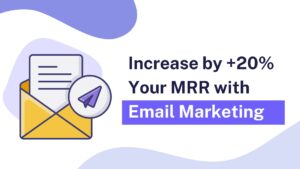In today’s fast-paced, competitive business landscape, B2B SaaS companies must constantly innovate and adapt to stay ahead of the curve. That’s why we’ve compiled this extensive list of 100 actionable growth hacking strategies to help you skyrocket your success. The core idea behind these strategies is to focus on improving just 1% in each area, which, when combined, can result in a 100% improvement or more in your overall business performance.
This comprehensive guide will cover various aspects of your business, from product development and content marketing to customer success and community building.
By implementing these B2B SaaS growth strategies and striving for small, incremental improvements, you can create a powerful, sustainable growth engine for your business. So, let’s dive in and explore these strategies to unlock your company’s full potential.
Product and Development Strategies
To ensure your product’s success, it’s essential to prioritize user experience, continuously improve features, and remain agile to adapt to user needs. By focusing on product optimization, you’ll create a solution that not only solves your target audience’s pain points but also encourages them to become long-term, loyal customers.
- Implement feature voting for users to prioritize improvements.
- Use A/B testing to optimize user onboarding flow.
- Integrate in-app messaging for user feedback and support.
- Add gamification elements to boost user engagement.
- Develop a freemium model to attract more users.
- Offer a product trial with limited-time access.
- Create an API to enable third-party integrations.
- Develop a progressive web app for improved accessibility.
- Implement in-app analytics to track user behavior.
- Optimize website load times for better user experience.
Content Marketing Strategies
Content marketing is a powerful tool for generating leads, nurturing prospects, and establishing your brand as a thought leader in your industry. High-quality, valuable content can help you build trust with your audience, drive organic traffic, and showcase the benefits of your product or service.
- Publish case studies highlighting customer success stories.
- Write long-form, in-depth blog posts targeting industry-specific keywords.
- Create whitepapers addressing industry challenges and solutions.
- Host webinars on relevant topics with guest speakers.
- Create infographics to simplify complex concepts.
- Develop a content hub or knowledge base.
- Produce video tutorials or product demos.
- Offer a free ebook or guide as a lead magnet.
- Curate industry news and insights in a weekly newsletter.
- Host a podcast discussing industry trends and expert interviews.
SEO and SEM Strategies
Search engine optimization (SEO) and search engine marketing (SEM) strategies help improve your online visibility and attract potential customers searching for solutions in your industry. By optimizing your website and utilizing paid advertising campaigns, you can increase your chances of being found by users searching for products or services like yours.
- Perform keyword research to identify search trends in your niche.
- Optimize on-page SEO elements, including title tags, meta descriptions, and headings.
- Build high-quality backlinks through guest posting and content outreach.
- Optimize website for mobile devices.
- Use schema markup for better search engine understanding.
- Implement long-tail keywords in content creation.
- Improve website’s internal linking structure.
- Track website rankings and make data-driven optimizations.
- Launch a Google Ads campaign for targeted keywords.
- Use retargeting ads to re-engage visitors who left your site.
Social Media and Influencer Strategies
Leveraging social media platforms and influencer marketing can help you reach a broader audience, engage with potential customers, and drive brand awareness. By sharing valuable content, collaborating with influencers, and engaging with your target audience, you can create a community around your brand and product.
- Share content and engage with users on relevant social media platforms.
- Use social listening tools to monitor brand mentions.
- Launch a social media contest or giveaway.
- Collaborate with industry influencers for product reviews or endorsements.
- Leverage user-generated content to showcase product benefits.
- Host a Twitter chat or AMA (Ask Me Anything) session.
- Use LinkedIn Sales Navigator to identify potential leads.
- Create a branded hashtag for increased visibility.
- Share customer testimonials and success stories.
- Utilize Instagram Stories or LinkedIn Stories for behind-the-scenes content.
Email Marketing Strategies
Email marketing allows you to communicate directly with potential and existing customers, nurture leads, and share relevant content and promotional offers. By segmenting your email list and using personalized, targeted campaigns, you can improve open rates, click-through rates, and ultimately, drive more conversions.
- Segment your email list based on user behavior.
- Personalize email campaigns with dynamic content.
- Use email automation to nurture leads.
- Test subject lines and preview text for higher open rates.
- Include clear calls-to-action in your email design.
- Monitor email deliverability and sender reputation.
- A/B test email design and content elements.
- Use behavioral triggers to send targeted emails.
- Leverage email drip campaigns to educate leads.
- Implement abandoned cart recovery emails.
Partnership and Referral Strategies
Partnerships and referral programs can help you tap into new markets, expand your reach, and generate more leads. By collaborating with complementary businesses, influencers, and affiliate marketers, you can drive growth through co-marketing initiatives and referrals from satisfied customers.
- Launch a customer referral program with incentives.
- Partner with complementary businesses for co-marketing initiatives.
- Create an affiliate marketing program.
- Join industry associations and networking groups.
- Sponsor industry events or conferences.
- Offer exclusive discounts for partner audiences.
- Collaborate on co-branded content with partners.
- Leverage joint webinars to reach a broader audience.
- Cross-promote products or services with partners.
- Exchange guest blog posts with industry influencers.
Customer Success and Support Strategies
Exceptional customer support is crucial for retaining customers and encouraging them to promote your product or service to their network. By providing multiple support channels, proactively addressing user needs, and continuously improving your support processes, you can ensure customer satisfaction and loyalty.
- Offer multiple support channels (email, chat, phone).
- Implement a chatbot for instant support and lead generation.
- Create a comprehensive FAQ section on your website.
- Develop a self-service knowledge base for common issues.
- Offer personalized onboarding for new customers.
- Monitor customer satisfaction with regular surveys.
- Establish a customer success team to proactively address user needs.
- Use customer feedback to prioritize product improvements.
- Provide product training resources (e.g., webinars, articles, videos).
- Implement a ticketing system to track and resolve customer issues efficiently.
Sales and Lead Generation Strategies
Effective sales and lead generation strategies help you identify potential customers, build relationships, and guide prospects through the sales funnel. By using targeted outreach, lead nurturing, and conversion optimization tactics, you can increase your customer base and drive revenue growth.
- Develop targeted lead generation campaigns using LinkedIn.
- Offer a free consultation or product demo.
- Implement exit-intent pop-ups to capture leads.
- Use lead scoring to prioritize high-quality prospects.
- Develop sales scripts and email templates for outreach.
- Optimize your website’s landing pages for conversions.
- Host virtual events or workshops for lead generation.
- Create a sales pipeline and CRM to manage leads.
- Implement marketing automation for lead nurturing.
- Offer tiered pricing plans to accommodate different budgets.
Data Analysis and Optimization Strategies
Data-driven decision-making is essential for continuously improving your growth strategies and achieving sustainable results. By monitoring key performance indicators (KPIs), analyzing user behavior, and optimizing based on data insights, you can make informed decisions that drive growth.
- Define key performance indicators (KPIs) for growth.
- Use Google Analytics to monitor website traffic and user behavior.
- Set up conversion tracking for goal tracking and optimization.
- Implement A/B testing for landing pages, emails, and ads.
- Use heatmaps and session recordings to analyze user behavior.
- Analyze customer churn and identify areas for improvement.
- Set up custom dashboards to track KPIs and make data-driven decisions.
- Leverage cohort analysis to understand customer retention trends.
- Use customer segmentation to tailor marketing campaigns.
- Monitor competitor strategies and adapt accordingly.
Community Building and Networking Strategies
Building a community around your brand and fostering strong relationships within your industry can lead to increased customer loyalty, word-of-mouth marketing, and growth opportunities. By engaging with your audience, participating in industry events, and establishing thought leadership, you can create a network of supporters and brand advocates.
- Participate in relevant online forums and communities.
- Host or attend local meetups and networking events.
- Create a private Facebook or LinkedIn group for customers.
- Offer a loyalty program or exclusive membership benefits.
- Engage with users and share valuable insights on platforms like Quora.
- Collaborate with industry experts for guest blog posts or webinars.
- Leverage user testimonials and case studies to build trust.
- Establish a thought leadership presence through speaking engagements and guest appearances.
- Reach out to industry publications for media coverage or interviews.
- Foster a company culture that encourages innovation and collaboration.
By implementing these 100 actionable growth hacking strategies, you can drive sustainable growth for your B2B SaaS business. Experiment with various tactics and continually optimize your approach based on data-driven insights and customer feedback.
Strategy 101: Hire a B2B SaaS Growth Expert
One of the most effective growth strategies is hiring a seasoned B2B SaaS consultant to guide your business through the growth process. A consultant brings industry-specific experience, expertise, and a fresh perspective to help you implement the most impactful growth tactics tailored to your unique business needs.
Importance of Hiring a Consultant
A consultant has a wealth of knowledge and experience in various growth strategies and can provide valuable insights and recommendations that you might not have considered. They can help you avoid common pitfalls and set your business on the right path to success.
Benefits of Hiring a Consultant
- Expert guidance: A consultant can analyze your current growth strategies and suggest improvements or alternative tactics to accelerate growth.
- Time savings: With a consultant’s expertise, you can implement growth strategies more efficiently, saving time and resources.
- Customized approach: A consultant will work with you to develop a tailored growth plan that aligns with your business objectives and target market.
- Accountability and support: A consultant provides ongoing support and ensures you stay on track with your growth goals.
- Knowledge transfer: Working with a consultant can help you and your team acquire new skills and knowledge to continue driving growth even after the engagement ends.
Free 15-Minute Consultation Call
If you’re considering hiring a B2B SaaS consultant, take advantage of a free 15-minute consultation call to determine if it’s the right fit for your business. During this call, you can discuss your growth challenges, goals, and potential strategies to see if the consultant’s expertise aligns with your needs.
This no-obligation call is an excellent opportunity to explore the benefits of working with a consultant and to decide if it’s the right investment for your business.







